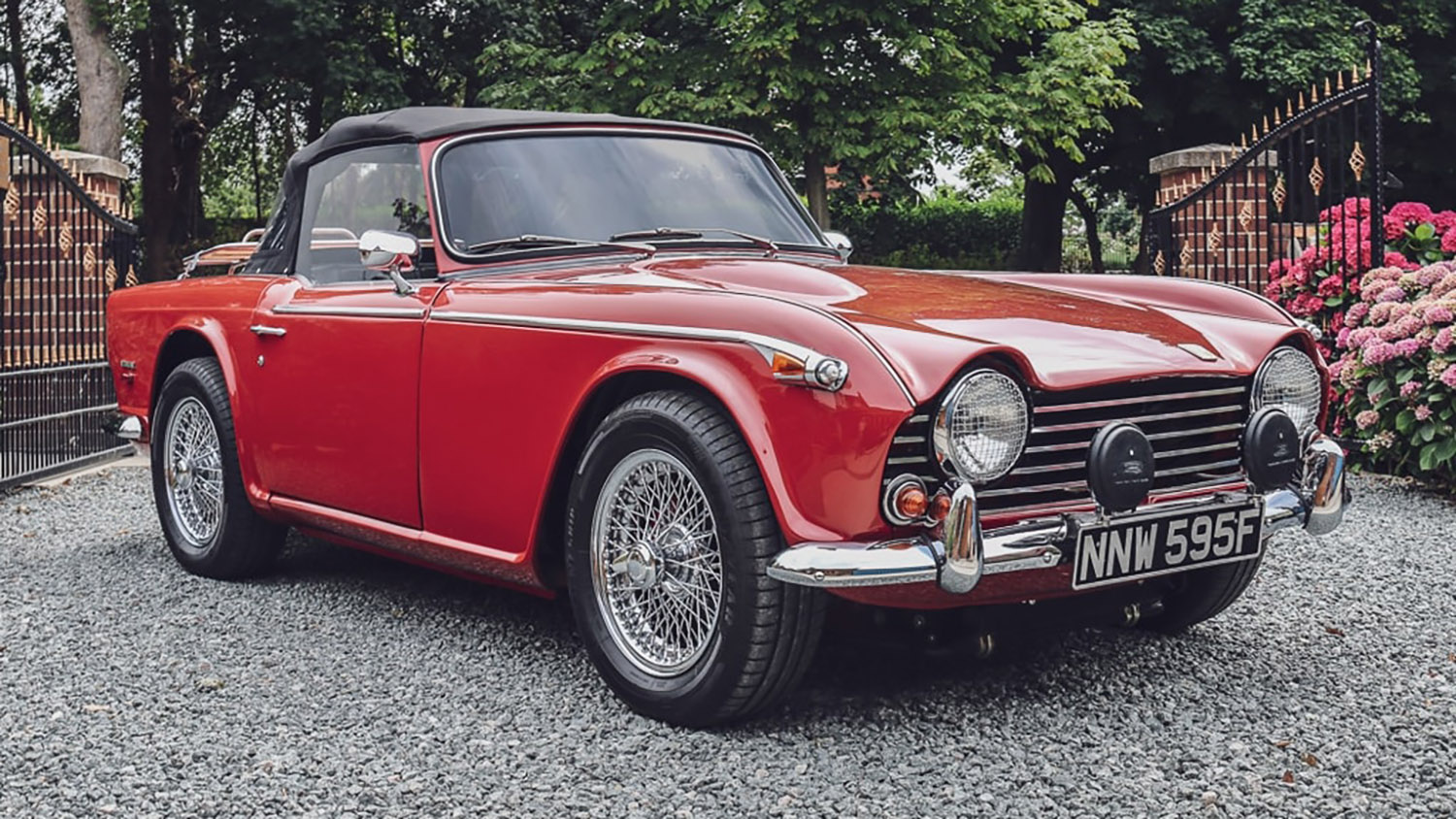BUYER’S GUIDE
Triumph TR5 review
Timeless looks and a powerful fuel-injected six make the TR5 the pick of Triumph’s 60s sportscars…
Engine
2.5-litre six-cylinder petrol
Power
152PS (112kW) @ 5,500rpm
Torque
223Nm (164lb ft) @ 3,500rpm
Kerb weight
1,030kg
0-62mph
c. 9 seconds
What Is It?
Clued-up classic car fans rate the TR5 as the sweet-spot in Triumph’s long-running sportscar family, its combination of the TR4’s elegant Michelotti looks with the muscular six-cylinder power of the later TR6 creating a Goldilocks blend of style and performance. The fact it was only on sale for little more than a year adds a level of exclusivity as well, especially if you’re chasing one of the less numerous fuel-injected European market models. And you’ll want to, given they have significantly more power than the carb-fuelled, US-spec TR250 versions. A choice of Hard Top with removable central panel or conventional convertible adds choice but, whichever you go for, the TR5 is the perfect blend of 1960s British sportscar cool.
Corrosive Areas
Chassis mounts for rear suspension and differential
Sills
A- and B-pillars
Checklist
- TR5 created as an upgrade to the TR4a, carrying over the independent rear suspension and Michelotti styling but with six-cylinder power
- Given kudos and value of Euro-spec models it’s worth checking the car you’re looking at is an original and not converted from a TR4a or American-spec TR250
- Chassis plate on the inner wing is a good clue to origins, chassis numbers for injected TR5s carrying a CP prefix as opposed to the CD for TR250s or CTC of the TR4a
- While American market cars dangle the dream of rot-free ‘dry state’ condition, in reality any TR5 will need a thorough inspection for corrosion
- Separate chassis is strong but needs checking for corrosion and crash damage — pay particular attention to outriggers and mounts for rear suspension and diff
- Sills also corrode — check door shutlines as poor alignment can be a giveaway for structural corrosion or poor-quality repair work
- Seam between rear wings and deck should be correctly beaded, not joined with filler
- Check engine for usual things like signs of over-heating, cross contamination of oil and coolant, low oil pressure and fluid leaks
- Also inspect for play in crankshaft bearings by waggling the lower pulley — any looseness could mean an expensive rebuild is pending
- Injection system’s fuel feed can cause hesitancy if the tank runs below a quarter — topping it up can be the simple cure in first instance, though switching to a more modern Bosch fuel pump is a common upgrade
- Gearbox demands a firm hand but look out for serious graunches, grinding or jumping out of gear; also make sure overdrive (if fitted) works in second, third and fourth
- Front suspension trunnions demand frequent lubrication — stiff steering or action a warning sign and puts extra strain on other components
How does it drive?
As good as it looks, the muscular but beautifully proportioned Michelotti design informing much about the TR5’s character on the road. While the body-on-frame construction is traditional, the fuel-injected power of the 2.5-litre six in European market cars gives it proper grunt, while the brakes, rack and pinion steering and all-independent suspension are a cut above the more basic engineering of an equivalent Austin Healey. True, it will prove a physical driving experience for those raised on newer cars, but that fits with the image. It’s more than capable of keeping pace on modern roads in both performance and handling.
What’s good?
Well, it looks great and goes well so that’s a good start! The rarity and performance also mean it’s more than capable of holding its own in the company of big Healeys and E-types as well, even if the values aren’t far behind. It’s also respectably practical, with a decent boot, additional stash space behind the seats and the option of a full convertible roof or Hard Top with removable central panel, the back-up fabric ‘Surrey Top’ small enough to tuck in the boot and carry with you in case of a shower. It’s also a well-supported car, with a strong network of parts and expertise to support everything from general upkeep to a full restoration.
What’s bad?
Rarity adds value, making the TR5 a big step up in cost from the four-cylinder TR4 family and more numerous TR6 alike. Even more so if you’re chasing a fuel-injected European spec car or original right-hand drive UK market model, given the more numerous American export versions ran a twin-carb arrangement that reduced power by nearly a third. Some may consider that a blessing of sorts given the Lucas fuel-injection has its quirks, but most will accept that in return for both curiosity value and the extra power. Like any car of the era, rust both visible and hidden can rear its head at any time and can be expensive to sort.
Which model to choose?
As ever, the best you can find and afford. The latter may dictate whether you’re gunning for one of the more numerous but less powerful American market TR250s or holding out for an injected version, but in either case condition is vital and, given the TR’s vintage, you need to be mindful of both its present condition and any previous work that may have been done to get it this far. Suffice to say, a car that presents well superficially may have hidden horrors beneath, so be picky. Each to theirs on body style but, for our money, the full convertible is a more attractive look than the Hard Top. If a little less flexible.
Specifications
Engine
2.5-litre six-cylinder petrol
Power
152PS (112kW) @ 5,500rpm
Torque
223Nm (164lb ft) @ 3,500rpm
Transmission
Four-speed manual, rear-wheel drive
Kerb weight
1,030kg
0-62mph
c. 9 seconds
Top speed
125mph
Production dates
1967-1968
